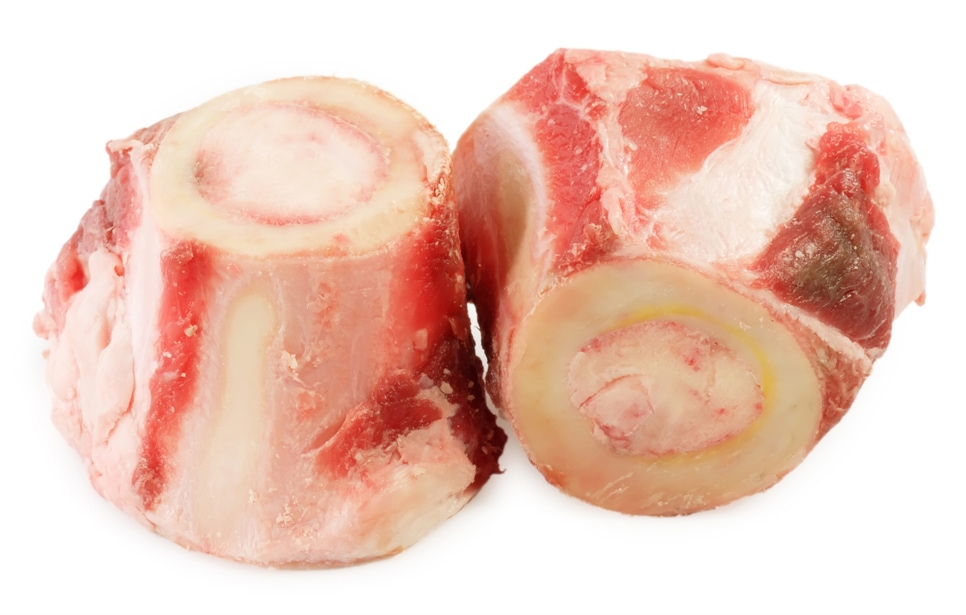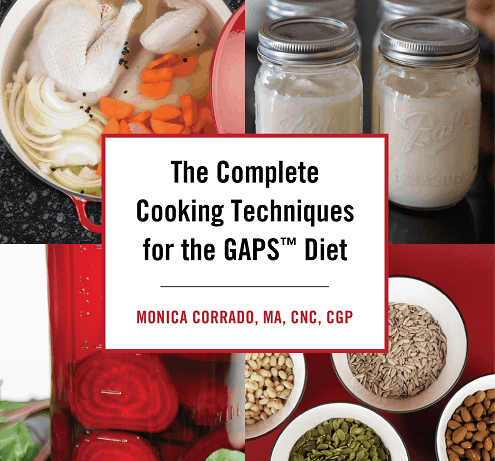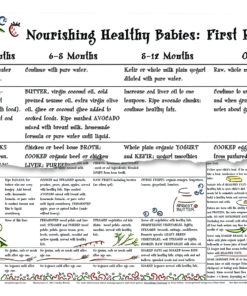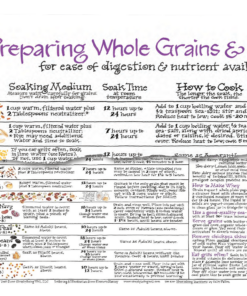Louis Pasteur is credited with developing “the germ theory of disease” (which I loosely translate as “germs jump into bodies”). Yet many other researchers and scientists of the time, including Claude Bernard, focused their research on internal regulation and the importance of nutrition, among other things. These scientists expanded their focus beyond germs to consider the state of human bodies that contracted illness and disease.
Upon his deathbed, Louis Pasteur is said to have spoken these words: “The terrain is everything. The microbe is nothing.” It seems that he discounted his own germ theory. Now, I personally would not say that “the microbe is nothing.” Yet I have always believed that the state of the environment counts. As many of you have heard me say, germs don’t jump into bodies.
“The terrain is everything” means that healthy, well-nourished bodies are able to deal with pathogens. But if you are malnourished from eating the standard American diet, which is full of processed foods and sugar, your immune system is at risk. Because it is not as robust, it is unable to mount a strong defense against pathogens. In fact, pathogens are probably ruling your internal roost right now.
Is your gut healthy and able to do its job? Do you have a robust community of beneficial and essential microbes in your gut that can keep pathogens in check? What you eat and do not eat now is more important than ever before. But if you are reading this article, you have probably been eating nourishing, traditional, real foods for some time. (And if you haven’t, it is never too late to start.)
Consider this article a reminder about how to keep your immune alliance well supplied with nutrients, especially those that nourish your organs of immunity and keep pathogens in check.
What can you do? First, stay calm. Next, be sure to wash your hands. Work up a lather for a good 20 to 30 seconds.
But do not stop there. The next step is to check your diet. As Hippocrates said thousands of years ago, “Let food be thy medicine and medicine be thy food.”
Here are a few tips:
Cut sugar out of your diet. Sugar—all kinds of sugar—suppresses the immune system, and we certainly do not want to suppress our systems right now.
Acidify your gut. Pathogens cannot survive in an acidic medium. Throw out that alkaline water! Drink 1–2 tablespoons of apple cider vinegar every day. If you take it before meals, it will also help you digest your food. Also include cultured dairy in your diet. Homemade cultured dairy from raw milk or cream is best. However, good-quality plain, full-fat organic yogurt made from grass-fed milk or kefir can provide lactic acid to your digestive tract. If you can’t handle dairy, eat fermented foods, which are also high in lactic acid. And lots of them!
Eat pastured eggs, especially the yolks. You need the cholesterol.
Make chicken soup. What I really mean is chicken meat stock. (Learn to make meat stock in my new book The Complete Cooking Techniques for the GAPS™ Diet.) Also suck out the marrow from the bones. Add some good sea salt and lots of fresh pressed garlic cloves to every cup of stock, along with some ghee, tallow, coconut oil, or coconut milk if you have it. (Garlic is specific to the respiratory system, and the lauric acid in coconut milk is an immune booster.)
Roast marrow bones from pastured cows. You may also cook them in water for an hour or two with herbs. Eat the marrow, drink the stock.
Immune-Boosting Vitamins
In addition to diet, consider specific vitamins. We all know that the immune system needs vitamin C—but it also needs vitamin A. Here are some tips for getting these important vitamins from your food:
Vitamin C: Immunity may be impossible without vitamin C, and I am not talking about ascorbic acid. (Stay away from those 1,000 mg “vitamin C” packets!) Ascorbic acid is not vitamin C. It is just the protective coating around the vitamin C complex. Taking too much of it can have a negative impact on your capillaries and blood vessels. “The value of natural vitamin C complex is demonstrated by its ability to promote phagocytic activity,” said Dr. Royal Lee in 1952.
Fermented cabbage, aka sauerkraut and other fermented foods, provide high levels of the whole vitamin C complex your body needs. Fermented foods also provide beneficial microbes and many other good things that help keep you well. Organic oranges or citrus fruits, as well as their skins, also contain high levels of the C complex. (For more information about the vitamin C complex, read The Real Truth about Vitamins and Antioxidants by Judith DeCava.)
Vitamin A: Liver is the super food with the highest levels of vitamin A. Look for liver from grass-fed and finished beef, chicken, lamb, or any other pastured animal. You may eat it in a pate, cooked with bacon and onions, or swallowed as “liver shots”—small, pill-sized pieces of liver (that must be frozen raw for a minimum of 14 days). Three or four pieces taken with your daily vitamins is a good start. You don’t even need to chew it if you don’t like the flavor. Cod liver oil along with high-vitamin butter oil (or ghee) is also a must at this time.
This is just some of what you can do with food. Eating the above will go a long way toward keeping your body well-nourished and giving it what it needs to function under normal conditions. That said, I was blessed to have been introduced to the work of Dr. Royal Lee (a colleague of Dr. Weston A. Price), and I recommend reading what he has to say about the nutrients the immune system needs when under attack. You can find many of his articles and lectures at the Selene River Press Historical Archives, which are free to all who are interested.
Dr. Royal Lee talked about the “immune triad” back in the 1940s. This triad of nutrients—ionizable calcium, essential fatty acids, and vitamin C complex—form an immune alliance to help counter attacks on the immune system.
The Immune Triad
Ionizable calcium: This is the only form of calcium the body can use. The most bioavailable form is Calcium Lactate from Standard Process.
Essential fatty acids (EFAs): These drive the calcium into the tissues where it is needed. EFAs are in fish oil (the best I have found is Standard Process Tuna Omega-3 Oil). Or, if you cannot easily digest fats, Cataplex F from Standard Process.
Vitamin C complex: The most complex form is Standard Process Cataplex C. These are what a mentor of mine calls “the bullets in the gun” that take aim at viruses and other pathogens.
But you also need the gun—the mechanism that helps launch the ammunition. This is the alliance of our organs of immunity: the thymus, liver, spleen, and bone marrow. Eating as outlined above helps nourish these organs. For supplemental support, Immuplex from Standard Process can help provide these critical nutrients.
Now for some recipes!
Frozen Liver Chunks (aka “Liver Shots”)
Don’t like the taste of liver but do like all of the health benefits? This recipe is for you!
The best liver is from pastured animals as their diet provides more nutritious livers and organs. Liver from calves or grass-fed beef, bison, lamb, or chicken would all make excellent contributions to your immune alliance.
Ingredients
1 slice of pastured calf, beef, bison, or lamb liver, frozen a minimum of 14 days
Instructions
- Place liver on a cutting board, and allow it to thaw just enough to get a very sharp knife through it. Line a sheet pan with parchment paper. Set aside.
- Working quickly, cut the liver into very small pieces, about the size of a pill that would be easy for you to swallow. Place the pieces on the prepared cookie sheet.
- When all the liver is on the cookie sheet, place it in the freezer for a few hours or more. When the liver is frozen, store in a freezer-safe container in the freezer.
- Swallow three or four pieces in the morning, or a few times a day if desired.
Sauerkraut
—Makes 1 quart. I suggest making several jars now so you can have some for later!
For more information about the benefits and techniques of lacto-fermentation, see the fermentation chapter of my book, The Complete Cooking Techniques for the GAPS Diet.
Ingredients
1 medium-sized organic cabbage (green, red, or a combination of different types of cabbage), rinsed
1 tablespoon caraway seeds (optional)
1 tablespoon sea salt
4 tablespoons whey (see below for recipe), or use an additional tablespoon of salt
Special equipment:
Meat pounder
1-quart wide-mouth ball jar
Instructions
- After rinsing cabbage, set aside one or two large cabbage leaves. Cut cabbage in quarters, removing and discarding the core from each quarter. Finely slice or shred cabbage with a very sharp knife or mandolin.
- Place cabbage in a large stainless-steel bowl. Add all other ingredients. Pound with meat pounder for 10 minutes. (Alternatively, allow the salt to work the cabbage for up to several hours before pounding.) If you do not have a meat pounder, simply use your washed hands to massage the salt into the cabbage for a few minutes to allow all of the water to release from the cabbage.
- Place ingredients in ball jar. Make sure all the cabbage is under the brine, and leave one to two inches of space from the top. You may place a reserved cabbage leaf on top to keep the cabbage under the brine.
- Seal tightly and leave on counter at room temperature for 3–5 days or longer, until the lid is taut when pressed down.
- Place in cold storage. Sauerkraut keeps for a month or so after opened. Unopened, it gets better with age. You can keep an unopened jar of kraut in the refrigerator for 6 months to a year.
“Quick” Whey
One quart of yogurt will yield about 2 cups of whey and 1 cup of yogurt cheese. You may store whey and cheese in a glass jar in the refrigerator for up to 6 months.
Ingredients
1 quart good-quality organic plain whole milk yogurt or kefir, no fillers
Special equipment:
Strainer, preferably cone-shaped
Cheesecloth, tea towel, or linen napkin
2-cup liquid measure, or bowl to fit strainer
Instructions
- Place strainer in liquid measure and line it with 2 layers of cheesecloth, a tea towel, or a linen napkin.
- Spoon yogurt or kefir into strainer. Whey will drip into the liquid measure, and the yogurt or kefir cheese will remain in the strainer.
- Leave on the counter to strain at room temperature for 12–36 hours. The longer you drip, the firmer the cheese.
Roasted Marrow Bones
It is very easy to roast marrow bones, and the health benefit is so worth it. Just be sure that your bones are from pastured cows. Though marrow is very rich, there is very little in a bone, so figure on serving up to a pound of bones per person.
Ingredients
2–3 lbs. marrow bones (about 2-inches in height), cut lengthwise (canoe-cut) or horizontally
Sea salt
Freshly ground pepper
Instructions
- Preheat oven to 450°F. Line a sheet pan with parchment paper (you may use a casserole or cast-iron pan instead).
- Place marrow bones in the pan. If your bones are cut lengthwise (“canoe cut”) so the marrow is exposed, place bone side down with marrow side up. If they are cut horizontally, place the side with the widest part of the bone down.
- Roast until the marrow starts separating and the bones are lightly browned, about 15–20 minutes, depending on their size.
- Serve with sea salt and freshly ground pepper. Spread on sourdough toast, or eat with a spoon. A fresh salad dressed with lemon juice would go well with the richness of the marrow.
Images/GAPS book (SRP), post images (Monica Corrado).







